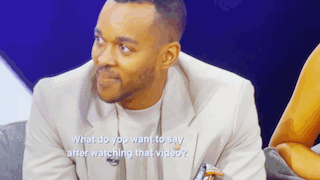
I have to admit, reality TV is a guilty pleasure of mine. “Love is Blind” is one of those shows, and I was looking forward to the reunion, as it had been about a year from the time the show was filmed and then aired to the public. I thought it would be a good reunion as the cast had several dramatic moments throughout the season. After watching the reunion, like many of us, I was left disappointed by the hosts, Nick and Vanessa Lachey. I felt the show was lackluster and, at times, had some very cringy moments. There were so many ways that it could have been better, and as I was viewing the show from a User Experience Researcher perspective, noticing that our jobs as researchers are not that different from these show host interviews.
My co-worker, Samantha Nullman, a fellow UXer and reality TV enthusiast, shares my observations, and in this blog post, I am going to cover 6 best UXR practices we were reminded of thanks to watching this reality TV interview.
#1. Always test out your tech before starting an interview.
The “Love Is Blind” reunion was supposed to be aired live via Netflix on a Sunday night. There was a high level of interest in this show, and it was delayed by over an hour, with viewers not able to stream it until later that night or even the next day. This caused frustration among viewers and the cast, leading to viewers speculating if there was something more going on. Viewers' and cast members' trust instantly took a hit.
This is comparable to having tech issues during remote UX interviews. We always test out our tech and have a game plan if things go wrong to avoid frustrating participants and observers/clients. A little bit of preparation ensures we respect everyone’s time and allows us to focus on the feedback we’re trying to gather. We can’t always take responsibility for tech going wack, but we can attempt to avoid these situations by testing it out ahead of time.
#2. Avoid interrupting or finishing the participant's sentences
Several times throughout the reunion, Vanessa interrupted the cast members after she asked them questions, not letting them speak or speaking for them. When talking with Paul about Micah’s ability to be a mother, Paul is speaking, and Vanessa interrupts him and tries to finish his sentence, and misinterprets how he feels. This caused Paul to become frustrated, and felt he had to speak over her to get his point across.
As UX researchers, it’s best to ask your questions and let the participants speak, giving them time to get their full point across without interrupting. This helps the participant feel heard and ensures a level of trust with the interviewer. It can also be helpful to let the participants speak and make sure you are listening as the researcher to avoid biasing them in any way.
#3. Show empathy for the user/interviewee
Questions and topics during the “Love Is Blind” reunion were heavy and controversial. The host asked very pointed questions that lacked empathy for certain cast members. She shows favoritism for the female cast members (Micah and Jackie) but not for the males (Paul or Marshall), and it’s very apparent in how she frames her questions. Instead of giving Marshall a second to process the video that was shown with Jackie and Josh and show empathy that it might have been difficult for him to watch, Vanessa asked, “What do you want to say after watching that video?” being very cold and straightforward.
When talking with participants in user interviews, they sometimes share personal details, and it’s important to give them space to share their thoughts and feelings and acknowledge what was shared. This gives them the security to share more genuine feedback knowing that you can understand where they are coming from.
#4. Avoid asking leading questions that potentially bias the participants
Countless times, the host asked leading questions or made biased remarks to the cast members. One example was Vanessa's interview with Jackie and Josh, during which she asked, “You know why you’re not meant to be because you have that guy next to you?” not allowing Jackie to state how she felt about the relationship. Another scenario was when Vanessa was questioning Paul about Micah’s ability to be a mother, she turned to Micah and said, “Is this making sense and settling with you, or are you just as confused as I am?” This causes friction between Paul and Vanessa, and she’s clearly taking sides with Micah. Instead, she could have asked Micah, “What do you think about Paul’s explanation?” and found out if Micah was understanding.
In interviews, it’s important not to share your thoughts and opinions, or ask questions that you think you know the answers to. It’s important to leave questions open-ended to ensure the researcher isn’t pigeonholing the participant into replying a certain way. Once the participant has shared their feedback, you can summarize what you heard without conveying any personal biases.
#5. Avoid asking loaded questions so the participants can focus on getting to the root of the problem
In the reunion, a video of Jackie and Josh was shown live telling their side of the story. The video is about 2 minutes long, and they address several topics. After the video was shared in real-time, Vanessa directly asked Marshall, “What do you want to say after watching that video?” His response was, “A lot happened in that video,” and it was hard for him to summarize and respond to all the different points made by Jackie. Instead, Vanessa could have asked him specifically about what he thought about the point she made about it being the “last straw” or addressed how Jackie said she wasn’t cheating with Marshall.
During user interviews with participants, it’s best to divide complex questions into smaller chunks. It is best practice to ask each individual question about a specific issue, so the participant feels they can speak to specific points without overwhelming them. Depending on the research questions at hand, I will frame questions around what we’re looking to learn and make sure we can get as specific as possible.
#6. Avoid using reactive body language
There are several times throughout the reunion when Vanessa’s body language is biasing the participants or making them feel uncomfortable. You can see that when she asks questions, she sometimes nods her head as she’s asking them (looking for agreement from the cast members). Another time, when talking to Marshall and asking about the video from Jackie, she asks a question and uses her eyes, a head tilt, and makes a face that gives the impression she is not siding with Marshall (see gif below). This immediately causes Marshall to get defensive.

Host Vanessa talks to Marshall about the video from Jackie
As a researcher, it’s ideal to create a safe environment for participants and not react using your body language to the information they’re sharing. If the user shares something interesting, it’s best to ask follow-up questions rather than reacting with body language. This ensures participants will feel heard and not judged for their responses.
In short, the “Love Is Blind” reunion could have gone much smoother and received much less backlash from viewers if the hosts had listened, shown empathy, not reacted with body language or loaded questions, and eliminated some of the bias in their questions. They could learn from experts such as Andy Cohen or Chris Harrison, who show empathy and keep an unbiased approach in their interviews.
At Key Lime Interactive, while some of our researchers share in the guilty pleasure of reality TV, we are first and foremost passionate about UX research and strategy, making it impossible for us to watch these shows without our UX hat on. Sometimes, the best lessons in life are about what not to do.
If you are looking for assistance in your next UX/CX research project, contact us to see how we can partner with you.









Comments
Add Comment